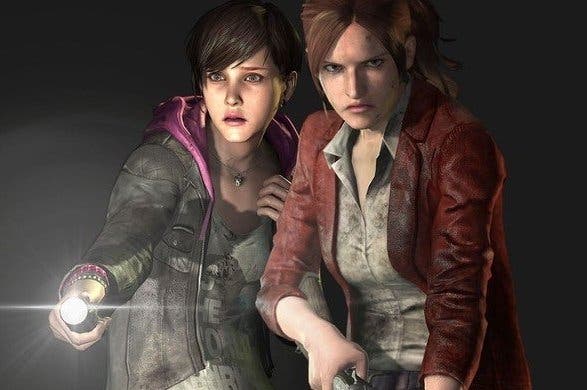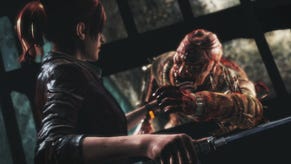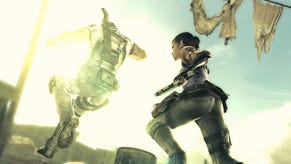Face-Off: Resident Evil Revelations 2
Xbox One trumps PS4 in Capcom's new sequel.
Resident Evil: Revelations 2 is one of the stranger releases we've covered in some time - an episodic, multi-platform sequel to a 3DS spinoff in the long running Resident Evil franchise. With a smaller budget and a lower price, Capcom is gambling with one of their most popular series by tackling a smaller scale release than the typical high-budget Resident Evil production. As a series typically known for its cutting-edge visuals, can this new take on the series leave its mark?
To start with, Revelations 2 runs on Capcom's internally developed MT Framework 2.0, which debuted in 2009 with Lost Planet 2. By sticking with this engine Capcom is able to improve image quality and push the frame-rate to 60fps on new consoles while maintaining compatibility with older platforms - aside from the MT Framework Mobile only 3DS, of course. Logically, when considering its last generation roots, we'd expect the new consoles to run circles around this game, but the results prove rather surprising - with PlayStation 4 owners in particular in for a bit of a disappointment when they play the game.
To start, we were at least happy to see a full 1920x1080 presentation on both new consoles, albeit with a rather basic FXAA implementation handling anti-aliasing duties. Capcom's FXAA implementation produces relatively clean edges but also suffers from mild texture blurring on distant surfaces. Both versions also make use of what appears to be full 16x anisotropic filtering with sharp, clean textures visible at any angle. With so many flat surfaces throughout the game, this feature is a must and we're glad to see that Capcom has implemented it.
Things are a tad disappointing on the PC side, with max settings providing a broadly equivalent experience to the Xbox One and PS4 titles. As with other MT Framework 2.0 games, anti-aliasing is limited to FXAA3 HQ as its maximum setting. Coverage is less aggressive here than standard console FXAA -which is also an option - but it does produce a noticeably sharper image. The only other notable differences comes down to shadow rendering, which offers a slightly higher level of quality than the console equivalents.
Alternative comparisons:
Revelations 2 consists of four main episodes and a pair of bonus chapters but as of this writing, we're limited to analysis of the first episode. This takes place in and around a prison and the surrounding forest, giving us a good idea of how the engine performs in different circumstances. It's not a particularly attractive game but it works well enough given the scope - the original release was designed as a handheld title but with no such limitations this time around, we're a bit disappointed at how simplistic the level design is. Indeed, in many ways, this still feels like a beefed up 3DS title.
Indoors, the first thing that becomes apparent is the lack of environmental detail. The prison is made up of a series of hallways and rooms, all of which are boxy and simplistic in design. Textures are muddy and often of a low resolution while the precious few objects dotted around the environment never really sit well within the scene. When combined with some unattractive specular highlights, many of the games surfaces are left looking muddy and indistinct. Worse still, the PlayStation 4 version of the game appears to use lower resolution specular maps compared to the PC and Xbox One releases.
In addition, shadow quality feels a bit sub-par throughout the game. While the shadows themselves are rendered with minimal artefacts, the number of objects capable of casting and receiving shadows is strictly limited. This feels like a holdover from the original 3DS game but again, no version exists for that platform this time around, making this compromise feel all the more strange. Ambient occlusion is implemented on all platforms as well but suffers from a halo effect when characters are in close proximity to a wall not unlike other less robust implementations we've seen before on last-gen platforms. The overall lighting model - something that was very impressive in Resident Evil 6 - feels overly simplified, leaving the basic assets looking rather plain.
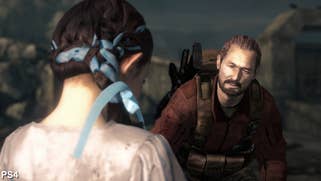
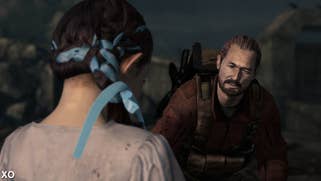
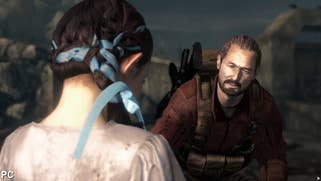
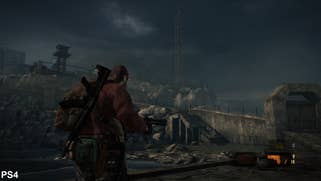
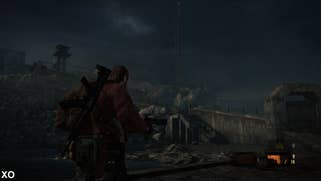
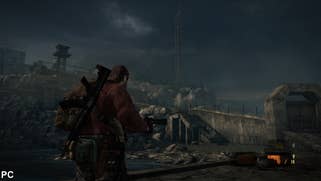

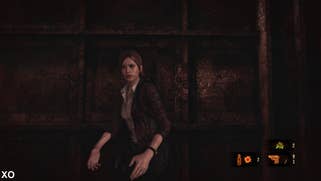
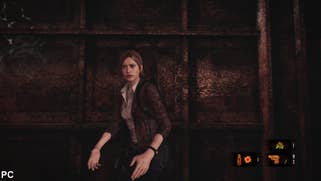

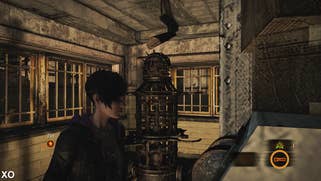
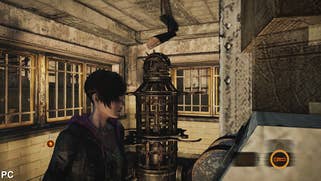
Post-processing is also kept to an absolute minimum. Motion blur is a selectable option on the PC, but it's really not evident where this is used outside of the rare cut-scene. Considering the remarkably high quality motion blur utilised in earlier MT Framework releases, this is a disappointing omission. Depth of field, used while aiming and during cut-scenes, is rendered at a relatively low resolution and appears chunky at times. The effect is stronger and more pronounced on consoles as well with shallower depth of field evident during the real-time cut-scenes.
All of this is evident right from the start but once the characters step outside, things improve somewhat with boxy corridors giving way to a more open landscape dotted with trees and abundant foliage. The vegetation system functions as it did in Lost Planet 2, with grass moving somewhat unrealistically in reaction to the player. Minor alpha to coverage dithering is also noticeable in overlapping grass textures. Lighting receives a small boost here as well, with screen-space light shafts providing a bit of extra depth at points. It's safe to say that this part of the game is more attractive than the prison area, particularly the dense forest seen late in Barry's portion of the game - but even so, it still feels a bit dated.
Animation is one of the key areas where a team looking to cut costs can save some serious money. The one-off animations so common in games like Uncharted or The Order 1886 are expensive to produce and as such, it comes as no surprise that there's nothing like that here. The basic animations are solid enough but transitions between some of the key animation sequences feel a bit forced, with characters often jarringly thrust into the correct position in order to facilitate playback. The team also resorts to offline rendered sequences for major cut-scenes just like the original game, which may well be down to the matter of cost savings.
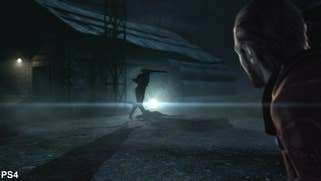

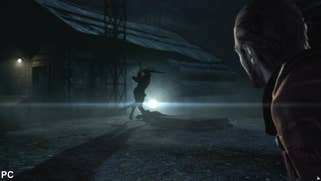

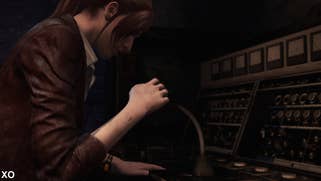
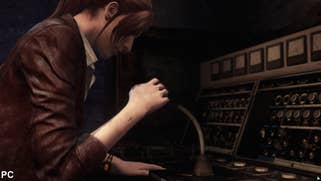
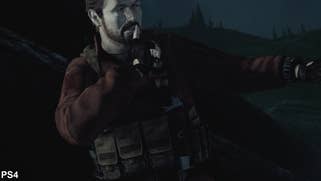
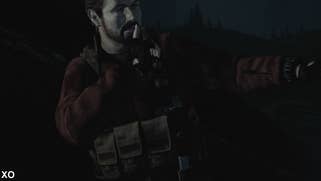
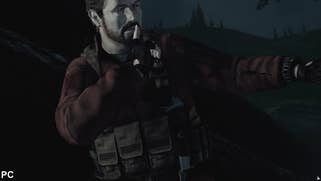
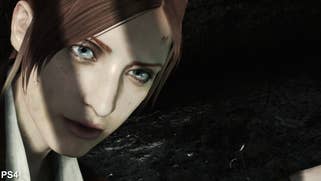


On the surface, the two console iterations of the game look mostly identical but an unexpected differentiator arises when it comes to performance. To put it simply, the PlayStation 4 version of the game runs noticeably worse than the Xbox One release. Right from the start we noted a few extra dips here and there on PS4, even though a couple of scenes do run touch faster on Sony's box. Once we set foot outdoors though, things quickly go pear-shaped for PS4. Nearly every outdoor section struggles on Sony's platform, with a large forest scene in particular falling under 30fps regularly, while those same sections on Xbox One averaged between 50-60fps by comparison.
The bottleneck seems to be related to the flashlight and grass textures, though the foliage itself does not actually cast shadows. Both versions also suffer from minor hitches and skips during normal gameplay. At least the frame-pacing issue we observed in earlier footage has been eliminated on PS4 but either way, the results are disappointing on Sony's platform - and it's not entirely clear where these issues stem from.
The game is also playable in split-screen mode and impacts performance as one would expect: frame-rate drops consistently under 60fps in this mode leading to a less fluid experience overall particularly outdoors, and PS4 doesn't close the gap in its performance differential. Visual quality at least is relatively consistent with the single-player mode, though the screen is divided into two smallish, 16:9 rectangles.
| PlayStation 4 | Xbox One | |
|---|---|---|
| Lowest Frame-Rate | 27.0fps | 42.0fps |
| Dropped Frames (from 17,000 total) | 3,112 (18.3%) | 566 (3.3%) |
Performance on PC is exactly as you'd expect: buttery smooth. Our i5/GTX 780 test system had absolutely no issues maintaining a rock-solid 60fps throughout, even at higher resolutions. The game features a surprising number of adjustable options despite the simplistic visuals, with the PS4 and Xbox One versions roughly equivalent to the highest settings on the PC (barring anti-aliasing and some other more subtle differences). Anyone looking for the smoothest possible experience with the game should definitely stick to the PC version, but be aware that the split-screen co-op mode has been completely removed from the PC version, which may be a dealbreaker to many.
Resident Evil Revelations 2: the Digital Foundry verdict
Revelations 2 isn't a bad experience but its lower budget is definitely reflected in its visuals. Of course, it's not fair to expect results matching its more expensive siblings, but we can't shake the feeling that Capcom could have taken things a bit further. Improved effects work, object motion blur, and more interesting light placement could have gone a long way towards enhancing the game's presentation. There's a wealth of MT Framework titles out there boasting a wealth of additional visuals effects and we have trouble understanding why more of the available features aren't utilised in this game - these are off-the-shelf effects included in a mature engine, and wouldn't have required additional asset generation.
We'd feel a lot more satisfied had the reduced feature set produced perfectly stable performance on the modern consoles, but the drops definitely scrape away a layer of polish - particularly on PlayStation 4. While both console versions are quite playable, the massive hitches in performance experienced in certain sections on the Sony platform left us preferring the Xbox One version. Of course, if you have even a moderately powerful gaming PC, we'd recommend that above all, as long as split-screen gaming is not important to you. The weird, subtle inconsistencies also left us curious about the game's development, as certain features appear to have been implemented somewhat differently across all three versions of the game. Perhaps the team responsible for the PS4 version struggled more with optimisation?
In the final analysis, Resident Evil Revelations is a bit of a strange experiment. After all the technological bells and whistles thrown at Resident Evil 5 and its successor, the stripped-back presentation here is quite disappointing, though the game remains playable enough. With Capcom's own Panta Rhei engine still in development, debuting on the forthcoming Deep Down, it's not clear if we'll see MT Framework again on the new consoles. Should that come to pass though, we sincerely hope Capcom solves its PlayStation 4 optimisation issues and delivers a more solid experience.
